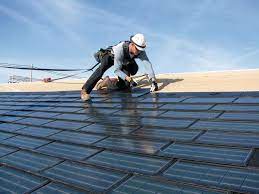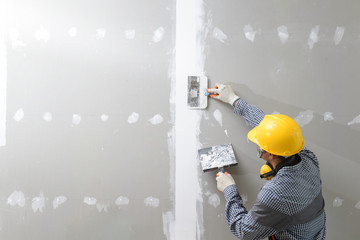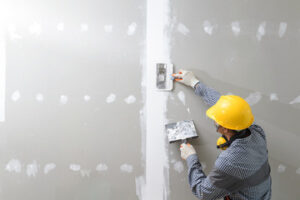Your roof is your home’s first line of defense against rain, snow and nature’s elements. An expert roofing contractor can recommend options that match your goals, architecture and budget.

Your project’s preparation is critical. Accurate measurements ensure that you’ll get the right materials and avoid waste. The underlayment you choose (such as an ice and water barrier or a moisture barrier) helps prevent leaks. Contact Five Star Roofing and Contracting for professional help.
The preparation process is the first step in a roof installation. It consists of removing the old roof, covering plants and setting up safety measures. It also involves inspecting the roof deck for damage and making necessary repairs to ensure a stable base for the new roofing materials.
Next, the underlayment is installed. This layer serves as a barrier between the shingles and the roof deck, protecting against moisture infiltration. It is typically made of asphalt-saturated felt or a synthetic underlayment. The underlayment is nailed to the roof deck in horizontal courses, and it should overlap the ice and water protector and valley membrane flashing by 4 inches.
Once the underlayment is in place, the shingle installation begins. A top-tier roofer installs shingles in layers and staggers them for a more attractive look and improved attic ventilation. Metal ridge vents are also installed for a more energy-efficient home. In addition, a roofer will add drip edge and valley flashing to protect the eaves from leaks. Flashing is also needed around chimneys, wood stove pipes, certain vents, and along hip roofs.
Before the roofers arrive, it’s a good idea to cover valuable items in your attic with plastic tarps or have them temporarily moved elsewhere. Vibrations caused by the hammering of shingles and the movement of construction equipment can cause items on the walls to fall. This can include framed pictures, mirrors, and artwork. It’s also a good idea to remove any breakable decorations from the ceiling.
If you have pets or children, it may be best for them to stay with friends or family during the roof replacement. Keeping them inside will keep them out of the way and prevent them from running through the work area and getting hurt by falling debris. You should also move any lawn ornaments, patio furniture, grills, or potted plants away from the work zone.
Materials
A new roofing installation can add value and curb appeal to your home. It can also improve energy efficiency and protect your home from the elements, such as harsh UV rays. Today’s roofing materials come in a wide range of styles, colors and textures to suit any home design. Your roofing contractor can recommend the best products to meet your needs and budget.
The roof sheathing, or roof decking, is the base layer that supports shingles and other roofing materials. It also safeguards against leaks. It can be installed using two main techniques: plank sheathing, which uses elongated wooden boards nailed to the rafters; or sheet sheathing, which is favored in modern construction because it provides a more uniform surface that’s easy to install.
Traditionally, wood shingles have been the most popular choice for roofing due to their affordability and versatility. However, advances in technology have made other materials more durable and stylish. For instance, metal shingles can be made to mimic the look of traditional shingle designs with greater durability and weather resistance. Concrete tile roofs are another durable option. They provide excellent waterproofing and have long lifespans, although they may require more frequent maintenance than other types of roofing.
There are also many options for flat and low-slope roofs. Single-ply membranes like EPDM and TPO are a good choice for flat roofs. They can withstand up to 120 mph winds, significant shingle uplift and ongoing freeze-thaw cycles. They can also reduce cooling costs thanks to their reflective properties.
Rolled roofing is a cheap option for low-slope roofs. It consists of long rolls of mineral-impregnated or asphalt-impregnated material topped with granules. It’s also available in fire-resistant versions for added safety.
Another roofing option is slate, which is quarried in various states. Its rugged texture and natural beauty can enhance any building. Its longevity and durability, however, depend on proper care and maintenance.
Installation
Roofing a house requires more work and materials than roofing a shed or barn, but the same basic processes apply. Whether you are replacing an old roof or installing a new one, the first step is to remove any existing shingles and underlayment. Park a dumpster close to the house and put tarps down on the ground near it to catch falling shingle debris. Protect plants and other movable items in the area with tarps as well. If you have a garden or other things in the yard that might get ruined by rain from a new roof, move them for the duration of the roofing project.
After removing the old roof, install drip edge flashing along the entire eave to protect the eaves from water, and, depending on your climate, possible ice dams. You may also need to install valley flashing and/or ice and water sheathing in places where the roof meets walls or chimneys.
Start at the bottom corner of the roof and begin installing metal panels, overlapping them by at least one ridge or as instructed by the manufacturer. Trim the panels to fit around vents, skylights and your chimney, if applicable. Use tin snips or a metal saw to cut the panels as needed. Remember the old adage, “measure twice and cut once.” Safety is also important when working up high with potentially dangerous tools, so another adult should be present to help keep an eye on things.
Inspection
When the roofing installation is complete, your contractor will conduct a final inspection. This helps ensure the work meets industry standards and your expectations. The inspector will look for issues like sagging areas, water damage and missing shingles. They will also check the gutters and flashing for rust or cracks. The inspector will inspect the shingle alignment and make sure that they are secured to the roof with proper nails. They will also check that the attic ventilation is adequate to prevent moisture problems that can lead to mold growth, insulation damage and structural damage to the building.
The inspector will also look for ponding water on the roof and check that drain lines are clear of debris and clogs. If there are ponding areas, the inspector will recommend creating a solution to get rid of the water and prevent further damage. They will also look for pests like termites, ants and rodents. They will look for signs of infestation and recommend treatment if necessary.
During the inspection, the inspector will use tools like binoculars, a camera, a moisture meter and a tape measure to collect information about the property. They will also take pictures of the exterior, interior and roof structure to document any defects or damages discovered during the inspection.
A home inspection is an important step in the process of buying a new house. It can help you understand the condition of the property and make an informed decision about whether to buy it or not. However, it is not a substitute for a professional engineering evaluation or a Phase 1 environmental assessment.
Having a professional perform the inspection is critical to making an accurate and fair assessment of the property. This will allow you to have peace of mind about the purchase and avoid any surprises down the road. A home inspector will also give you helpful advice about maintaining and repairing the property, including the roof and other components of the structure. They can also assist with obtaining any necessary permits or approvals.




